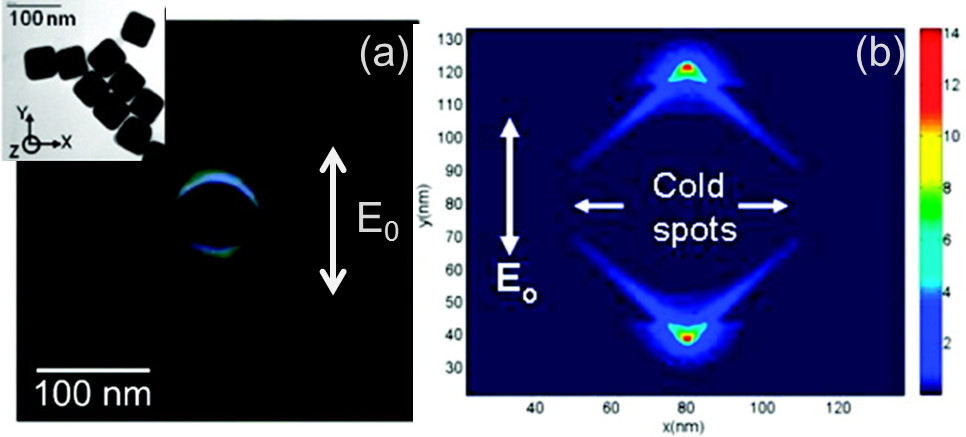Control of light-matter interaction on the nanoscale requires development of new instrumentation (Scanning Probe Microscopies) and new materials (hybrid plasmonic).
The Laboratory of Nanotechnology, Instrumentation and Optics (Troyes) has been developing, for several years already, an original technique for imaging the optical near-field around metal nano-objects. They use a photoisomerizable azobenzene-dye polymer that is spin coated onto lithographic nanostructures and is subsequently irradiated with laser light. The photo-induced displacement of matter at the surface is probed by differential Atomic Force Microscopy (before and after irradiation). These topographic modifications are related to the distribution in intensity and polarization of the electromagnetic local field around the nano-object.
The EDNA group (Francis Perrin Laboratory) has been developing for three years an expertise in the synthesis of gold nanoparticles (Au-NPs) which should lead to many collaborations in the field of plasmonics. Compared to NPs obtained by lithography, the colloidal NPs offer better confinement of the electromagnetic field which enables us to demonstrate here for the first time, the existence of “cold” spots that are spatially extremely confined.

“Spatial Confinement of Electromagnetic Hot and Cold Spots in Gold Nanocubes” M. Haggui, M. Dridi, J. Plain, S. Marguet, H. Perez, G. C. Schatz, G. P. Wiederrecht, S. K. Gray, R. Bachelot, ACS Nano, 6 (2012) 1299
Contact : S. Marguet (2-6283)




